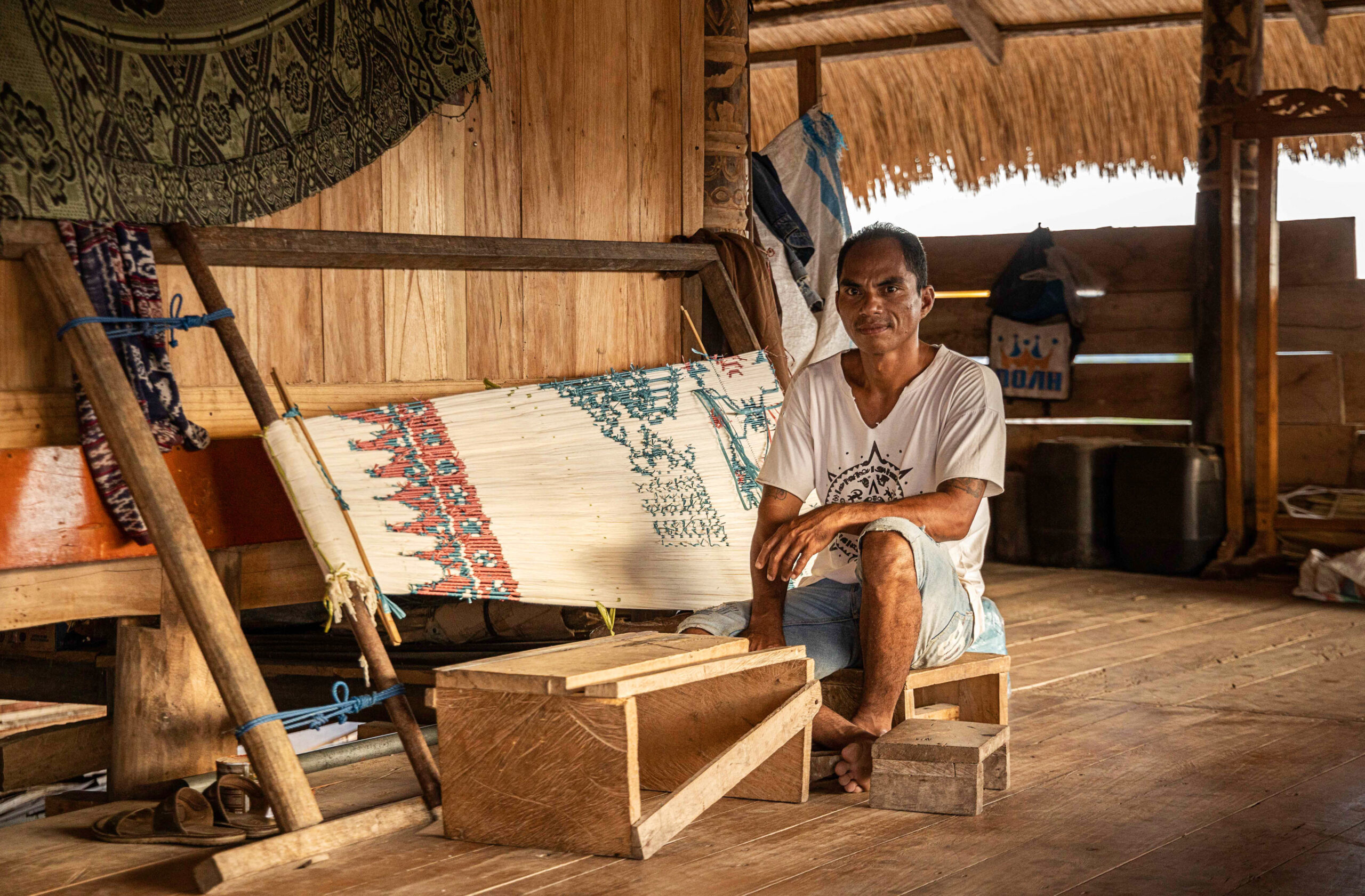In a small village outside the Eastern Sumba community of Melolo, Hana and her daughter spend the day working in the shade of the thatched communal weaving house, gently drawing polished wooden sticks through the brightly dyed cotton warp, conjuring into being patterns of animals, spirits, ancestors, and mythical creatures. As Hana weaves, she teaches, passing on centuries-old techniques of tenun ikat, spinning, dyeing, and patterning cloth.
Traditionally, weaving on Sumba—a small island only 200 kilometres long toward the eastern edge of Indonesia’s trailing archipelago—was the domain of older women. But change is coming in the form of a shifting climate and environmental crisis, and now younger women and even men are joining the textile business, partaking in tradition and adding their own stories to the cloth, intertwining ancient Marapu religious belief with contemporary creativity.
Montreal-based documentary photographer Boris Ruvet-Thebia travelled to Melolo to capture the ancient and modern art of Sumbanese weaving. What he saw was a culture in transition.

Motifs including animals, plants, and spirits feature in Sumbanese weaving.
On Sumba, weaving is more than an industry; the art is closely tied to culture, ceremony, history, and spirituality. Certain patterns honour the ancestors at a funeral, while others bless a marriage. Of the 70-some motifs traditionally used, many represent plants, animals, and natural phenomena, symbolizing the interconnectedness of the natural and spiritual worlds—the crocodile represents strength and protection, while the horse symbolizes wealth and power. A traditional piece of fabric may take months to weave and fetch more than a thousand dollars on the international market. Many pieces, however, stay on Sumba as gifts, dowries, or clothing for ceremonial occasions such as weddings and funerals.

A piece of tenun ikat cloth can take up to a year co complete.

Umbu Nadwa has only recently joined the weaving trade.
Life here follows the rhythms of rain and sun. During the wet season, Sumbanese work in the fields, growing a simple diet based on rice, corn, and cassava, supplemented with fish and fruit. The dry months are for spinning, dyeing, and weaving cotton—which grows locally, unlike the millions of bales imported every year to feed Indonesia’s industrial textile factories. Sumbanese cotton is coloured with natural dyes, including red from the roots of the fruit-bearing morinda trees, yellow from turmeric, and blue from indigo leaves—all of which are hardy enough to grow in the difficult dry conditions.
Through resellers, the cloth reaches buyers in online marketplaces, antique shops, and even modern international brands.

On Sumba, weaving is more than an industry; the art is closely tied to culture, ceremony, history, and spirituality.
Climate change, however, has pushed the dry season longer and longer, squeezing the growing season and threatening the harvest, especially in the east of Sumba, where the arid limestone hills support little vegetation. For the past decade, agriculture around the valley of Melolo has suffered, and many have been forced to leave. With farming in decline, one of the few remaining economic drivers is tourism; the lush beaches of Sumba’s south coast host some of the most captivating luxury resorts in the world.
Another is weaving. In contrast to large-scale cotton growing, which is notoriously water-hungry, the natural materials of Sumbanese weaving are unusually climate resilient. In 2020, a local government initiative began to encourage export of textiles to offset the economic effects of water scarcity. Through resellers, the cloth reaches buyers in online marketplaces, antique shops, and even modern international brands.
Umbu Nadwa poses for a photo while taping together individual cotton threads before dyeing. As a man, he represents the evolving culture—his practice of tenun ikat breaks a long tradition of women weavers. But as change sweeps across the island, the Sumbanese have no choice but to weave it into the tapestry of their lives.


In Sumbanese culture, tenun ikat cloth is used for gifts, dowries, and clothing for ceremonial occasions.
Read more from our Autumn 2024 issue. Words by Niko Bell.









